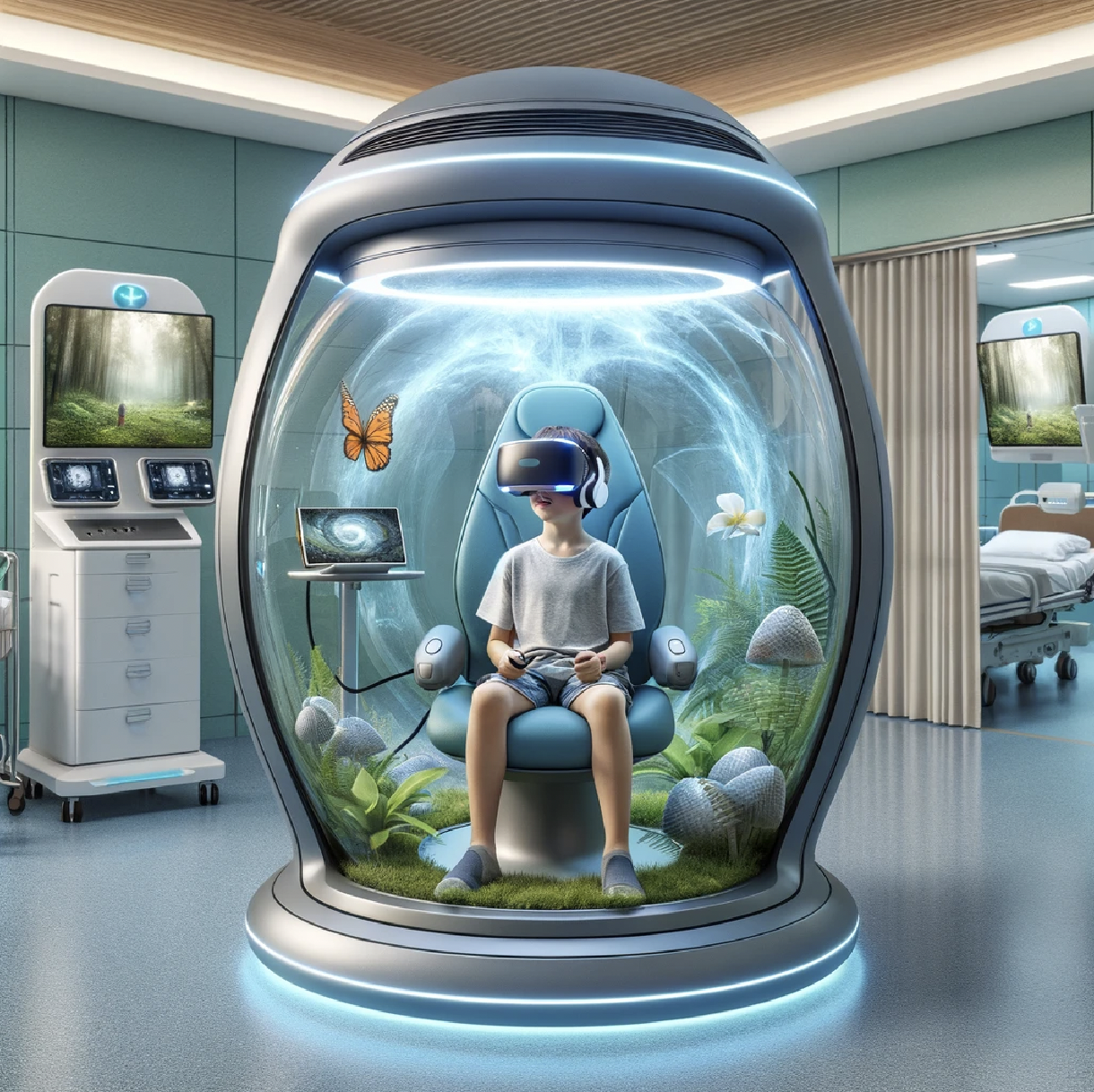Introduction:
The world of pediatric oncology is one that requires not only advanced medical
treatments but also compassionate care that addresses the emotional and
psychological needs of young patients. One of the most promising developments in this
field is the use of virtual reality (VR) as a therapeutic tool to manage pain and anxiety in
children undergoing cancer treatment.
Understanding the Challenge:
Children with cancer often undergo numerous painful procedures, leading to significant
distress, anxiety, and pain. Traditional methods for managing these aspects, such as
medications, have limitations and potential side effects. This is where VR steps in as a
novel and effective solution.
How Virtual Reality Helps:
VR immerses patients in a three-dimensional, computer-generated environment. By
wearing a VR headset, pediatric patients are transported to a different world, which
distracts their attention away from the painful procedures and reduces their perception
of pain. This distraction therapy is not just a mere escapism; its grounded in the "gate
control theory" of pain, which suggests that the brain can only process a limited amount
of information at a time. By engaging multiple senses in an immersive VR experience,
less attention is available to process pain signals.
Clinical Evidence:
Several studies have shown the efficacy of VR in reducing pain and anxiety in pediatric
oncology patients. For example, a study published in the Journal of Pediatric
Psychology found that VR significantly reduced pain and distress during blood draws in
children with cancer. Another study highlighted its effectiveness in reducing anxiety
during port access procedures.
VR Applications in Pediatric Oncology:
1. Distraction During Procedures: VR can be used during painful procedures like lumbar
punctures, bone marrow aspiration, and chemotherapy port access. It offers an
engaging escape, reducing the need for sedation and pain medication.
2. Relaxation and Stress Management: VR environments can be calming and
meditative, helping children to manage anxiety and stress associated with their
treatment and hospitalization.
3. Education and Preparation: VR can also play a role in preparing children for
upcoming procedures by simulating the hospital environment and what they can expect,
thereby reducing fear of the unknown.
Advantages Over Traditional Methods:
The advantages of VR in pediatric oncology are multi-fold. It is non-invasive, has no
pharmacological side effects, and can be repeatedly used with sustained effectiveness.
It also offers a personalized approach, as the content can be tailored to each child’s
preferences and needs.
Future Directions:
As technology evolves, the potential of VR in pediatric oncology expands. Future
developments may include more interactive and personalized VR experiences,
integration with other pain management techniques, and broader accessibility in
hospitals. VRenity is developing technologies that embrace these personalized
immersive experiences.
In Conclusion:
Virtual reality is transforming the way pain and anxiety are managed in pediatric
oncology. It stands as a testament to the power of technology in enhancing patient care
and improving the quality of life for young cancer patients. As we continue to explore
and refine its applications, VR holds the promise of making the cancer journey a little
less daunting for these brave young warriors.
About VRenity
VRenity is at the forefront of transformative therapeutic technology, crafting immersive experiences that envelop the senses and foster tranquility. Our innovative solutions are set to revolutionize the way individuals engage with mental wellness, utilizing the latest in audio and visual technology across popular VR platforms. Prepare for a new dimension in wellness, where serene soundscapes meet dreamlike visuals, all within the reach of your VR headset.
 Nerdle
Nerdle



